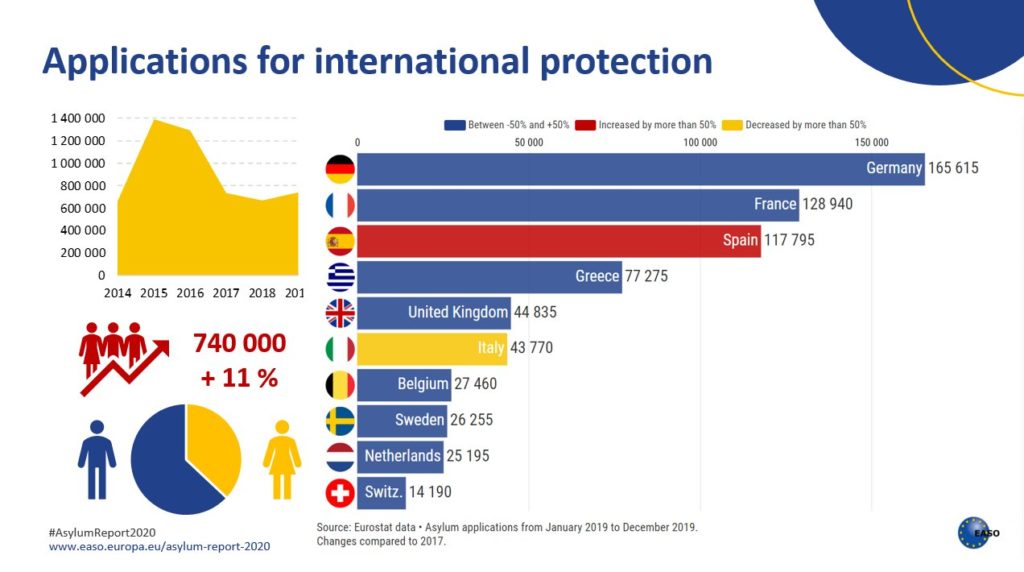By Dario Mazzola, Executive Scientific Coordinator of PROTECT
The European Asylum Support Office‘s (EASO) annual report on the situation of asylum in the European Union is a must-read for everyone interested in refugee issues with a focus on the EU+ area. The document covers 2019 trends but it does not seem to talk about another epoch: rather the opposite. Here are but a few extracts from its wealth of data:
- Displacement has reached a new record high: 79.4 million people across the world are currently displaced.
- Turkey is the country hosting the highest absolute number of refugees, 3,6 million. Germany is 4th, on pair with Sudan, with 1,1 million.
- 740 000 applications for international protection were lodged in EU+ countries in 2019: an 11% increase from 2018 and the first increase since 2015, the year of the refugee crisis.

The perspectives on international protection we give from PROTECT network help framing these elements and appreciating their relevance – see in particular Francesca Longo’s intervention on the problematic externalization of asylum procedures by the EU, and Jo Veary and Elspeth Guild’s interventions on asylum at the time of covid.
More than statistics
The annual report is more than a collection of statistics: EASO’s standpoint is in itself much useful:
- It points to EASO’s (and EU+) increasing institutionalization with respect to asylum issues, including a reference to the broader world process initiated by the Global Compacts (pp. 5;7).
- It highlights the unforeseeable impact of the covid-19 emergency on future migratory trends (pp. 5; 25).
EASO’s interrogatives are not out of place. The fact that despite the lockdown, arrivals to Italy by sea have already tripled with respect to 2019 provides but a small example of what could be a much more complex, and large scale evolution.
With Libya as far from stability as ever, Turkey’s protagonism in NATO, Mediterranean, and MENA politics accompanied by its pivotal role in EU’s influx control, (the EASO report recalls that the EU-Turkey agreement stemmed arrivals from Turkey by 94%), migration and asylum are bound to remain at the crossroad of major future developments in the area.
In the 1930s, the displacement caused by mass impoverishment was portrayed in Dorothea Lange’s photographs such as Migrant Mother.
What is to come now, can hardly be imagined.
